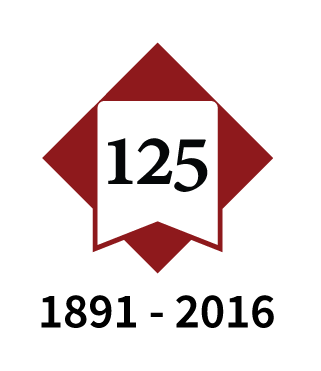Below you'll find answers to some common questions regarding Open Enrollment.
What happens if I miss Open Enrollment or choose not to make my elections?
If you choose not to take action, coverage will either “roll over” or default into a new plan.* So take the time to review your options, otherwise you’ll have to wait until the next Open Enrollment period unless you experience a qualified life event (such as getting married, having a baby, changing job status) to make changes.
* The cost of coverage will reflect the 2016 contribution amounts. Also, if you elected the following plans in 2015, you’ll need to make an election as these plans will not roll over:
- Health Savings Account (HSA) – you must re-elect the HSA in order to set your contribution.
- Health Care Flexible Spending Account (FSA) – you must re-elect the Health Care FSA in order to set your contribution.
- Dependent Day Care Flexible Spending Account (FSA) – you must re-elect the Dependent Day Care FSA in order to set your contribution.
- Child Care Subsidy Grant (CCSG) – if you are awarded a CCSG subsidy, you must accept the subsidy during Open Enrollment.
If I’m a current Blue Shield PPO member, what steps must I take during Open Enrollment?
Because the Blue Shield PPO plan is being discontinued, you have two options:
- Review and elect a new plan (Blue Shield EPO, Blue Shield Healthcare + Savings Plan, Stanford Health Care Alliance or Kaiser).
- Should you choose not take any action, you will automatically be enrolled in the Blue Shield Healthcare + Savings Plan, which is a PPO high deductible plan. This plan allows non-network services and uses the same provider network as the discontinued PPO plan. With this plan, employees may also elect a Health Savings Account (HSA) which is an account used to pay for health care costs with pre-tax dollars. The HSA is not automatic; you must elect this optional plan during Open Enrollment to set your contributions and receive contributions from Stanford. Note: Stanford contributions are only available to active benefits-eligible employees who elect the Blue Shield Healthcare + Savings Plan and HSA.
What is the difference between the Blue Shield Healthcare + Savings Plan and the Blue Shield ACA Basic High Deductible Health Plan?
While both plans are high deductible health plans, there are significant differences. The Blue Shield ACA Basic High Deductible Health Plan was designed to meet minimum coverage requirements based on the federal Affordable Care Act (ACA). This means your out-of-pocket costs are higher when compared to the Blue Shield Healthcare + Savings Plan. Compare coverage details below:
|
|
Blue Shield Healthcare + Savings Plan |
Blue Shield ACA Basic High Deductible Health Plan |
| Deductibles | $1,750 individual $3,500 family |
In Network Out of Network |
|
In Network |
80% of costs covered after you’ve paid the deductible |
60% of costs covered after you’ve paid the deductible |
|
Out of Network |
60% of cost covered after you’ve paid the deductible |
50% covered after you’ve paid the deductible; deductible is also higher for out of network services. |
|
Out-of-Pocket Maximum Expenses |
$3,750 individual |
In Network Out of Network |
|
Health Savings Account (HSA) |
Employees may elect an HSA and Stanford will make a contribution ($300 for employee only; $600 employee + family) |
Employees may elect an HSA, but Stanford will not make a contribution |
Why should I consider the Blue Shield Healthcare + Savings Plan?
The Blue Shield Healthcare + Savings Plan offers network flexibility, is reasonably priced and provides the opportunity to save money for future medical expenses.
- Access to Non-Network Providers: With this plan, you’ll have access to a network of top-notch doctors and providers, features free in-network preventive care, includes prescription coverage, and puts a cap on the amount you’ll pay for care within a year.
- Less expensive (or less costly) than the EPO: While this high deductible plan requires you to pay more up front before the university starts sharing the expense, this plan can accompany an optional HSA, which can help save costs.
- Health Savings Account (HSA): The HSA is an optional account through Blue Shield’s partner, HealthEquity, which helps you pay for eligible health care expenses. For employees, you can contribute money to the account from your paycheck, before taxes are taken out, and Stanford will also make a contribution. For retirees, you may set up an HSA directly through HealthEquity or with a financial institution of your choice and set aside tax-deductible funds.
Why is Kaiser no longer being offered for free for employee-only coverage?
In 2015, Kaiser and Stanford Health Care Alliance (SHCA) were both priced the same. For the 2016 plan year, Kaiser’s proposed increase was higher than that of SHCA, so the Kaiser plan is no longer the lowest-price option.
Why was the PPO discontinued?
Stanford elected to discontinue the Blue Shield PPO plan choice due to cost. Over the years, the Blue Shield PPO Plan has continued to be the most expensive plan offered by the university, for what employees and retirees pay in premiums as well as what the university pays in administrative costs. Additionally, when looking ahead at the Affordable Care Act (ACA) excise "Cadillac" tax, to be implemented in 2018, the PPO plan is already too expensive to maintain under the current ACA thresholds.
How has the Affordable Care Act (ACA) impacted our plans and costs?
To date, the Affordable Care Act (ACA) has had little impact on Stanford’s employee health care benefits. One very positive effect has been the ability to keep dependents on our plans until they reach the age of 26. However, the costs associated with universal health care in America continue to grow. In 2018, a federal excise tax (also known as the “Cadillac tax”) is one of the ways the ACA is being funded. Under this mandate, the excess of health plan costs over $27,500 per family and $10,200 per individual per year will be taxed at 40%. Currently, all but one of Stanford’s health plans exceed the thresholds. If the university maintained its current health plan offerings, Stanford would face a possible $14 million excise tax. Therefore, Stanford must continue its efforts to keep health care costs manageable for both employees and for the university.
What are some things I can do to help me save on health care costs?
Some actions you can take to help defray costs are:
- Preventive Care: To stay on the healthy track, be sure to take advantage of preventive care, such as an annual exam or “well baby” checkups. Preventive care is free under all of the plans as long as you stay in network.
- Elect a Health Care Flexible Spending Account (FSA) during Open Enrollment: For employees, the Health Care FSA lets you set aside money for health care expenses such as deductibles, copays, prescriptions, eyeglasses, etc., before taxes are calculated on your salary.
- Choose generic vs. brand name prescriptions: Save money on prescriptions by requesting generic or lower-cost versions of the medicine you need, and by taking advantage of mail-order programs.
- Use urgent care facilities and limit emergency room visits: Don’t run to the emergency room for needs that are better suited to a doctor’s office or an urgent care clinic. Also, take advantage of your medical plan’s advice nurse.
- If you choose the Blue Shield Healthcare + Savings plan, stay in network and elect a Health Savings Account (HSA). The HSA allows employees to pay for health care costs with pre-tax dollars!
- Participate in BeWell: When you register with the BeWell Employee Incentive Program and take the Stanford Health and Lifestyle Assessment (SHALA), you may earn up to $480* depending on your participation level. Retirees may also participate in limited programs at a reduced cost.
*NOTE: to be eligible for the incentive, BeWell participants must also be enrolled in a Stanford-sponsored medical plan in 2016. Visit BeWell for program details.




